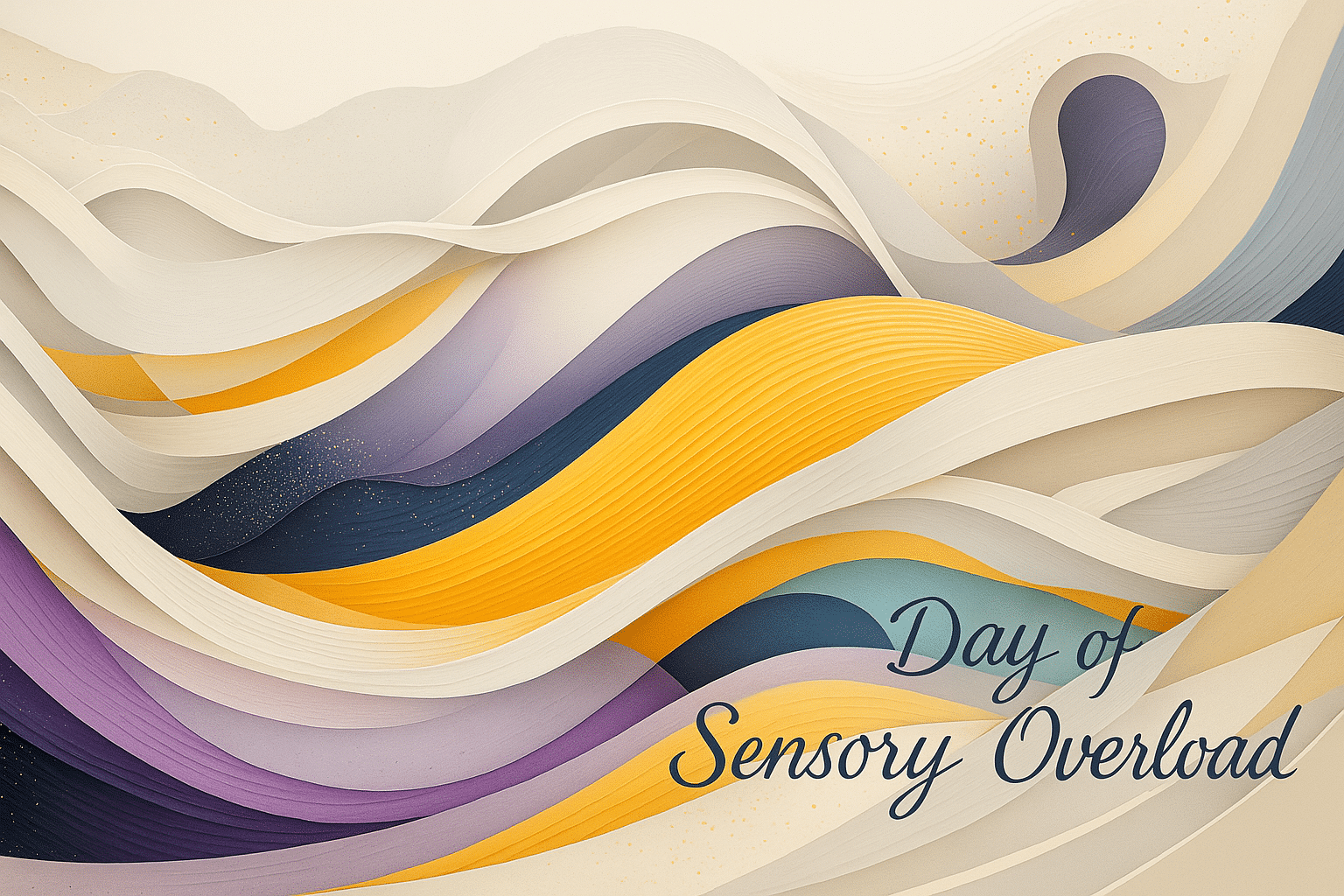What is Day of Sensory Overload?
Day of Sensory Overload is observed every year on June 23. It brings attention to the experience of sensory overload, a condition in which the brain receives more input from the senses than it can process. The day highlights how overwhelming everyday environments can be for people who are hypersensitive to stimuli like noise, light, touch, smell, or movement.
This day is especially relevant for people living with conditions such as acquired brain injury, autism, ADHD, or sensory processing disorder. But sensory overload can affect anyone, temporarily or chronically, particularly in high-stimulus environments. Day of Sensory Overload calls for understanding, recognition, and better accommodations in society.
History and Origin
Day of Sensory Overload was initiated in the Netherlands by the organization Hersenletsel-uitleg, a platform focused on raising awareness about acquired brain injuries and neurological conditions. The first observance took place to shed light on an often invisible struggle: how sensory overload affects daily functioning, relationships, and health.
The choice for June 23 was symbolic. It reflects the need for clear, seasonal communication when symptoms often flare due to warmer weather, increased outdoor activity, and social obligations. Since its introduction, the day has gained traction among advocacy groups, care professionals, and individuals affected by sensory overload, not only in the Netherlands but increasingly across borders.
The goal of the day is twofold: to give voice to people who struggle with overload in silence, and to educate the wider public and policymakers about the need for better support systems.
Who participates in Day of Sensory Overload?
- People with Brain Injuries: Share their experiences to raise visibility of sensory sensitivity after trauma.
- Autism and ADHD Communities: Engage in education campaigns and discussions about the sensory aspects of neurodivergence.
- Caregivers and Families: Advocate for supportive environments and better understanding of sensory needs.
- Health Professionals: Offer insights, therapy tools, and participate in conferences or awareness events.
- General Public: Learn how to create quieter, more accessible spaces and support affected individuals.
Slogans and Themes
Slogans used for Day of Sensory Overload often include “Respect the Limits,” “Overload is Real,” and “Less Stimulus, More Life.” Themes usually focus on recognition, self-advocacy, and inclusion. Many campaigns highlight how invisible sensory struggles are, urging people to look beyond appearances and recognize internal challenges.
The messages are not about pity but about awareness and empowerment. They help foster empathy, reduce social stigma, and encourage policy changes that support calmer, more accessible environments.
Colors, Symbols, and Patterns
Colors
- Soft Blue: Represents calm and peace, often preferred by people sensitive to intense visual input.
- Grey: Symbolizes the ‘fog’ or shutdown that comes with overload.
- Lavender: Suggests sensitivity and sensory awareness.
Symbols
- Ear with a Slash: Indicates sound sensitivity and need for quiet.
- Spiral Overload Icon: Represents internal chaos and overstimulation.
- Closed Eye: Symbolizes rest, retreat, and the need for sensory breaks.
Patterns
- Fading Gradients: Reflect the transition from clarity to confusion.
- Distorted Waves: Express the overwhelming impact of constant or sudden stimuli.
- Simplified Shapes: Emphasize the desire for clean, quiet, low-input environments.
Most Used Hashtags
- #SensoryOverloadDay
- #Overstimulation
- #NeurodivergentNeeds
- #TooMuchInput
- #June23
How do you celebrate Day of Sensory Overload?
- Spread Information: Share educational content, infographics, or personal stories online.
- Host Quiet Events: Create calm spaces, art sessions, or walks without music or crowds.
- Distribute Earplugs or Sunglasses: Raise awareness with symbolic giveaways that show support.
- Promote Accessibility: Advocate for sensory-friendly environments in public buildings or events.
- Reflect and Rest: Take the opportunity to evaluate your own sensory boundaries and rest if needed.
Why is Day of Sensory Overload important?
Day of Sensory Overload is important because it acknowledges a reality that is often misunderstood or completely ignored. Many people experience deep discomfort, pain, or confusion in ordinary situations like supermarkets, public transport, or loud social gatherings. When this is dismissed or overlooked, it can lead to isolation, burnout, or worsening symptoms.
By recognizing this condition, the day gives people the language and platform to explain their needs. It also pushes society to become more inclusive by promoting quiet zones, flexible spaces, and more thoughtful design in public life. Awareness is not a luxury. It’s a foundation for dignity, understanding, and health.
This day creates a space for validation and solidarity. It tells those affected that their struggle is real and that it’s okay to protect their boundaries. In doing so, it opens the door to more humane and responsive environments that respect everyone’s sensory limits.
Features
June 23: Day of Sensory Overload (Netherlands)
Why do you keep falling for the same type?
Read the article Lovemaps: the hidden blueprint of our love.

